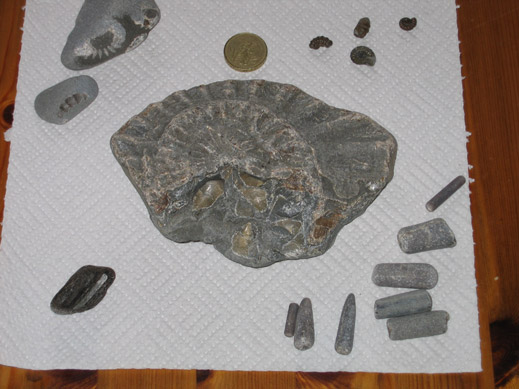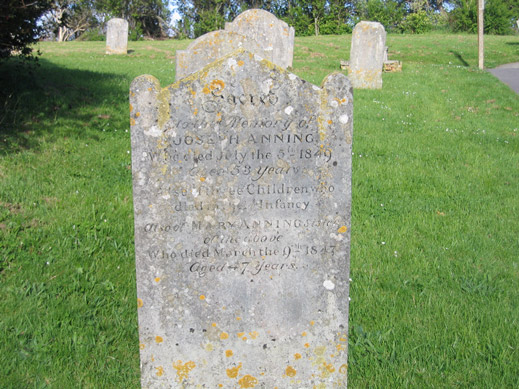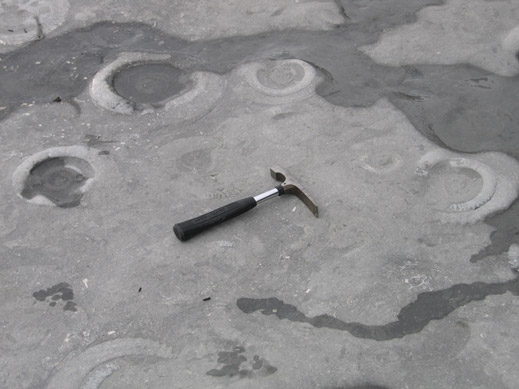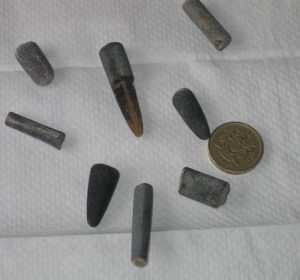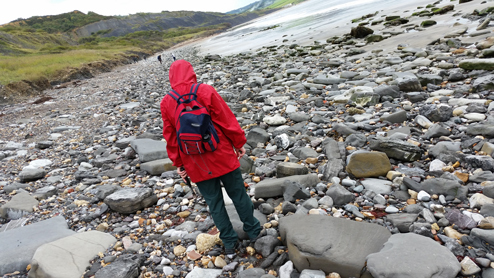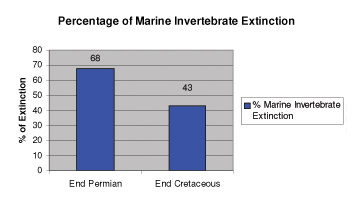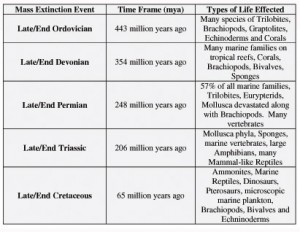Rises in Oxygen Levels may Explain “Cambrian Explosion”
A new study from a multi-national team of scientists provides evidence of the link between the explosion of early life forms and the oxidation of the deep oceans. The rise of oxygen levels within the ocean between 635 and 551 million years ago may have helped trigger the increase and rapid diversification of early lifeforms, leading ultimately to the “Cambrian Explosion”.
The “Cambrian Explosion” is a term used by scientists to describe the huge increase in life that occurred around 545 million years ago, at this stage of the history of life on Earth, all life was associated with marine environments. It was during the Cambrian that most of the major groups of animals that exist today evolved.
Speedy Evolution
Soft bodied animals and the stromatolites (colonies of bacteria) were partly replaced and superseded by the evolution of organisms with hard parts such as exoskeletons and shells. The first forms of life that could be biomineralised evolved, this meant that the hard parts of their bodies could be preserved as fossils and thus this period of ancient history not only marks the increasing abundance and diversity of organisms but also marks the start of an enriched fossil record, providing palaeonotologists with more evolutionary evidence.
Complex organisms had been in existence prior to the beginning of the Palaeozoic, but the fossil record is extremely poor. Multi-cellular life forms have been recorded in rocks of approximately 600 million years of age, but these creatures seemed to have lacked any hard parts and as soft-bodied creatures, palaeontologists have only a few tantalising fossils to work with.
A Rise in Oxygen Levels
The rise in oxygen levels and the oxidation of deep oceans in the late Precambrian has been accepted for a number of years. However, it had been thought that the increase in photosynthetic bacteria such as cyanobacteria (formerly known as blue-green algae), assisted by other non-biological means such as the breakdown of water into hydrogen and oxygen by ultraviolet rays penetrating to the surface of the Earth through the ozone devoid atmosphere had led to the increase.
Now, new research from scientists studying the geochemical structure of the Duoshantuo Formation in southern China reveals that life on Earth may have been influenced by two distinct pulses of oxygen. The first increase in oxygen predates the “Cambrian Explosion” by a significant amount of time but may have led to an increase in microscopic life forms. The second burst of oxygen aerating the oceans seemed to have occurred around 550 million years ago and in geological terms immediately pre-dates the increase in life during the Early Cambrian.
Trilobites Thrived During the Cambrian
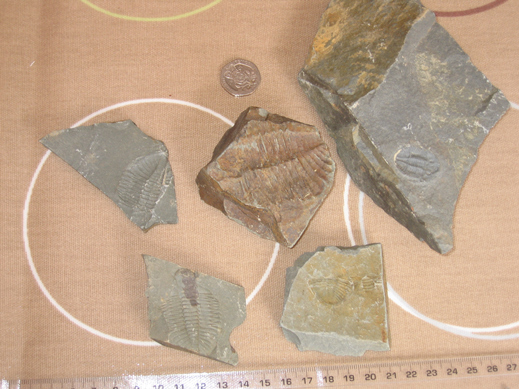
A selection of our trilobite fossils. These ancient marine creaturs thrived during the Cambrian.
Picture credit: Everything Dinosaur
An international team of scientists from Virginia Tech, the University of Maryland, University of Nevada (Las Vegas) and the Chinese Academy of Sciences set out to test the relationship between the evolution of more complex and diverse life forms and environmental change. To do this the team needed to find sedimentary strata that pre-dates the Cambrian and a sequence of strata (stratigraphic column) that would show deposition and formation as a timeline, one that had not been altered or changed by other chemical or geological processes.
Finding pristine Precambrian strata is a challenge in itself but such locations are known, one being the Doushantuo Formation in the Yangtze Gorges area, Guizhou Province, southern China. The strata consists of phosphate and dolomite sequences, laid down at the bottom of a sea. China at this time was made up of two separate and submerged continental sheets, that lay in shallow, warm tropical waters off the coast of the super-continent Gondwana. The first part of what was to become China, closest to Gondwana, straddled the Equator, the second part lay across the Tropic of Cancer.
Mapping Oxygen Levels
By mapping the levels of oxygen at various levels in the stratigraphic column, the team could measure the amount of oxygen in the marine environment and then associate this with the biostratigraphic column (fossils used to date and correlate strata), this would provide evidence to support the increase in oxygen leading to a diversity and increase in lifeforms.
To calculate when there was enough oxygen to support animal life in the ocean, the researchers asked, “What kind of geochemical evidence would there be in the rock record?” said Shuhai Xiao, associate professor of geosciences at Virginia Tech.
Scientists hypothesized that there was a lot of dissolved organic carbon in the ocean when oxygen levels were low. If oxygen levels rose, some of this organic carbon would be oxidized into inorganic forms, some of which can be preserved as calcium carbonate (CaCO3 ) in the rock record. “We measured the carbon isotope signatures of organic and inorganic carbon in the ancient rocks to infer oxidation events,” said co-author Ganqing Jiang, assistant professor of geology at the University of Nevada at Las Vegas.
The stratigraphic column exposed during the construction of the dams in the Yangtze Gorges area represents a large slice of ancient geological history. The researchers carefully took samples from each strata of rock, the deeper the strata, then, unless the strata has been overturned, as can sometimes happen during mountain building processes for example, the older the rocks will be. This is an important geological principle it is called the “Law of Superposition”. Many hundreds of different samples were taken, representing marine deposits laid down during the Precambrian and Early Cambrian.
The researchers cleaned and crushed the small samples to powder, which they reacted with acid to release carbon dioxide from carbonate minerals, and then burned the residue to get carbon dioxide from organic matter. “The carbon dioxide that is released was measured with mass spectrometers to gives us the isotopic signature of the carbonate and organic carbon that was present in the rock,” a researcher commented.
“The relative abundances of the carbon-12 and carbon-13 isotopes, which are stable and do not decay with time, provide a snapshot of the environmental processes taking place in the ocean at the different times recorded in the layers of rock”.
The stratigraphic pattern of carbon isotope abundances suggested to these researchers that the ocean, which largely lacked oxygen before animals arrived on the scene, was aerated by two discrete pulses of oxygen.
The first pulse that occured in the Precambrian seemed to have little impact on a large organic carbon reservoir in the deep ocean, but did spark changes in microscopic life. The second event, which occurred around 550 million years ago, immediately prior to the palaeontological event known as the “Cambrian Explosion”, resulted in the reduction of the organic carbon reservoir. This indicates that the ocean became fully oxidized just before the evolution and diversification of many of Earth’s earliest animals. Perhaps this dramatic increase in the level of available oxygen provided the fuel for the rapid burst of evolution.
Certainly, scientists have speculated why all of our sudden around 545 million years ago evolution seems to have pressed the accelerator when for much of the Precambrian (Cryptozoic), evolution seemed to be progressing at a very slow pace. You could say that evolution, prior to the second pulse of oxygen had progressed at a snail’s pace but to be fair to the Gastropods (snails) these animals did not really get going until the Early Cambrian.
Photographs show a field of view 0.15 millimetres in diameter of a beautifully preserved eukaryotes fossil from the Doushantuo formation (635-550 million years old). Eukaryotes are cells with their genetic material enclosed in a cell nucleus. Eukaryotes are believed to have first appeared in the fossil from strata dated to 2,100 million years ago, but evidence from molecular biology indicates that they may have been present earlier than this but left little or no fossil evidence.
“The Doushantuo Formation has a wonderful fossil record. It allows us to look at major fossil groups, when they appear and when they disappear, and to see a relationship between oxidation events and biological groups”, a researcher commented.
“This study supports the growing view that life and environment co-evolved through this tumultuous period of Earth history,” said geochemist Alan J. Kaufman, a co-author of the study from the University of Maryland.
The triggers for the oxidation events remain elusive, scientists are still not sure what set off these oxidizing events. Members of the research team have suggested that these two events recorded in marine sediments were probably related to oxygen in the atmosphere reacting with sediments on land as rocks are eroded away. The lack of biological activity on the land would have resulted in weathered rocks and soils on the continents releasing certain dissolved ions, such as sulphate, into rivers. These would then be transported to the sea where they might be used by bacteria to oxidize the organic carbon pool in the deep oceans.
This article has been adapted from materials published by Virginia Tech, USA. The full article entitled “Pulsed oxidation and biological evolution in the Ediacaran Doushantuo Formation,” was written by Kathleen A. McFadden; Jing Huang and Xuelei Chu of the Institute of Geology and Geophysics, Chinese Academy of Sciences; Ganqing Jiang; Alan J. Kaufman; Chuanming Zhou and Xunlai Yuan of the Nanjing Institute of Geology and Palaeontology, Chinese Academy of Sciences; and Shuhai Xiao.
It is due to be published in March.
CollectA have recently introduced a range of models of invertebrates reflecting iconic animals from the fossil record including trilobites and members of the Mollusca: Replicas of Iconic Fossil Animals, Models, Toys and Games.
